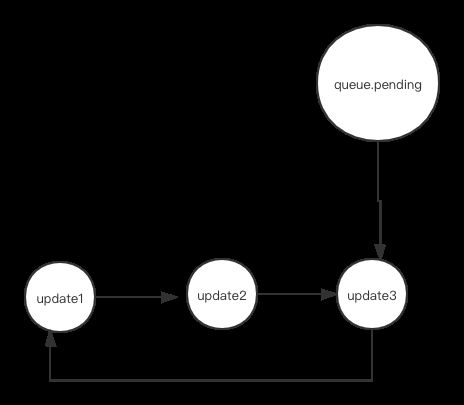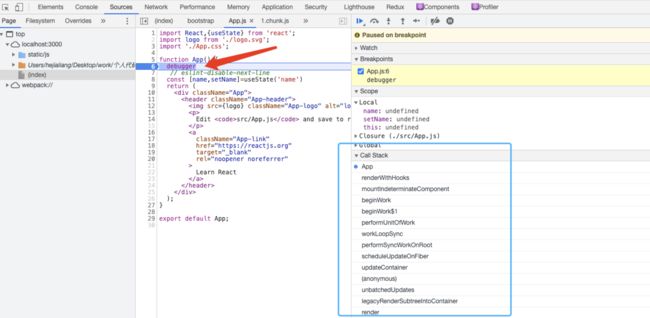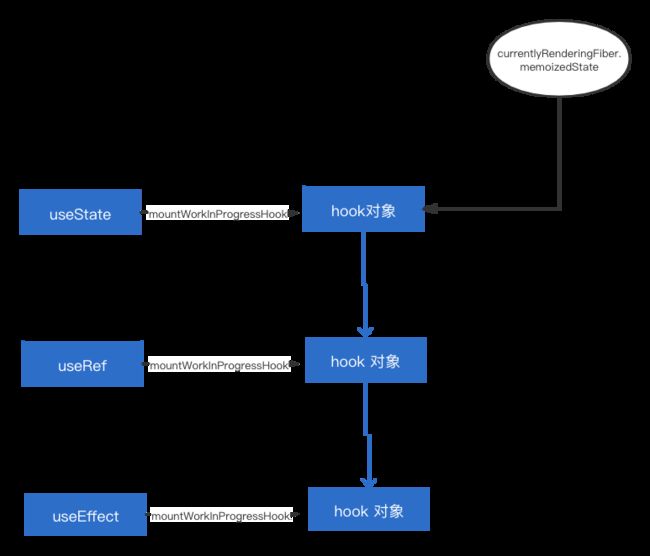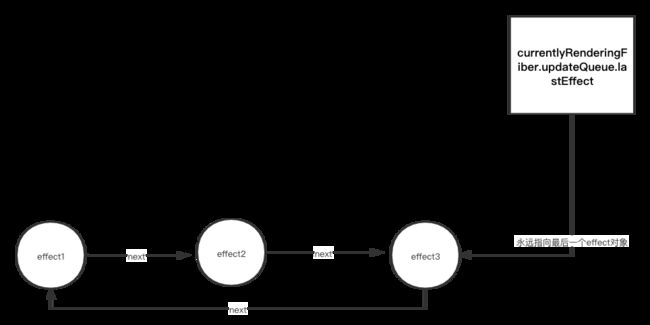React-hooks
1 hooks使命
#逻辑组件复用
-
逻辑与UI组件分离
React 官方推荐在开发中将逻辑部分与视图部分结耦,便于定位问题和职责清晰
-
函数组件拥有state
在函数组件中如果要实现类似拥有state的状态,必须要将组件转成class组件
-
逻辑组件复用
社区一直致力于逻辑层面的复用,像 render props / HOC,不过它们都有对应的问题,Hooks是目前为止相对完美的解决方案
#hooks 解决的问题
render props
Avator 组件是一个渲染头像的组件,里面包含其中一些业务逻辑,User组件是纯ui组件,用于展示用户昵称
export default funtion APP(){
return (
<div className="App">
<Avatar>
{data=> <User name={data}/>}
Avatar>
div>
)
}
- 通过渲染props来实现逻辑组件复用
- render props 通过嵌套组件实现,在真实的业务中,会出现嵌套多层,以及梭理props不清晰的问题
Hoc
class Avatar extends Component {
render(){
return <div>{this.props.name}div>
}
}
funtion HocAvatar(Component){
return ()=> <Component name='王艺瑾'/>
}
- 通过对现有组件进行扩展、增强的方式来实现复用,通常采用包裹方法来实现
- 高阶组件的实现会额外地增加元素层级,使得页面元素的数量更加臃肿
Hooks
import React,{useState} from 'react'
export function HooksAvatar (){
const [name,setName]=useState('王一瑾')
return <>{name}>
}
- React 16.8引入的Hooks,使得实现相同功能而代码量更少成为现实
- 通过使用Hooks,不仅在编码层面减少代码的数量,同样在编译之后的代码也会更少
#2 hooks实践
#Hook官方APi(大概率用到的)
- useState 函数组件中的state方法
- useEffect 函数组件处理副作用的方法,什么是副作用?异步请求、订阅原生的dom实事件、setTimeoutd等
- useContext 接受一个context对象(React.createContext的返回值)并返回该context的当前值,当前的context由上层组件中距离最近的
- useReducer 另一种"useState",跟redux有点类似
- useRef 返回一个突变的ref对象,对象在函数的生命周期内一直存在
- useMemo 缓存数值
- useCallback 缓存函数
- useCustom 自定义Hooks组件
- useState
import React,{useState} from 'react'
const HooksTest = () => {
// 声明一个count的state变量,useState可以给一个默认值
const [count,setCount]=useState(0)
/*
useState也可以传递一个函数,
const [count,setCount]=useState(()=>{
return 2
})
setCount也可以传递一个函数
这个函数第一个参数可以拿到上一次的值,
在可以在函数里做一些操作
setCount((preState)=>{
return {...preState,..updatedValues}
})
*/
return (
<div>
{/*通过setCount来改变count的值*/}
<button onClick={()=>{
setCount(count+1)
}}
>Addbutton>
{count}
<div>
)
}
- useEffect
import React,{useEffect} from 'react';
// 我们可以把useEffect 看做componentDidmount、componentDidUpdate、componntWillUnmount
const HooksTest = () => {
const [count, setCount] = useState(0);
// useEffect可以让你在第一个参数的函数中执行副作用操作,就是请求数据,dom操作之类的
// useEffect返回一个函数,函数里表示要清除的副作用,例如清除定时器,返回的函数会在卸载组件时执行
useEffect(()=>{
document.title = `You clicked ${count} times`;
return ()=>{
clearInterval(timer)
}
})
/*
useEffect的第二个参数,通过在数组中传递值,例如只有count变化时才调用Effect,达到
不用每次渲染后都执行清理或执行effect导致的性能问题
*/
useEffect(()=>{
document.title = `You clicked ${count} times`;
},[count])
/*
如果想执行只运行一次的effect(仅在组件挂载和卸载时执行),可以传递一个空数组,
告诉React你的Effect不依赖与props或state中任何值
*/
useEffect(()=>{
document.title = `You clicked ${count} times`;
},[])
/*
可以使用多个Effect,将不相关的逻辑分离到不同的effect中
*/
useEffect(()=>{
axios.get('login')
},[])
return(
<div>
<p>You clicked {count} timesp>
<button onClick={() => setCount(count + 1)}>
Click me
button>
div>
)
}
- useContext
// 1. 创建一个上下文管理组件context-manager.js,用于统一导出context实例
import React from 'react'
export const ItemsContext = React.createContext({ name: '' }) //接受一个默认值
// 2. 父组件提供数据
import React from 'react'
import Child from './child'
import { ItemsContext } from './context-manager'
import './index.scss'
const items = { name: '测试' }
const Father = () => {
return (
<div className='father'>
<ItemsContext.Provider value={items}>
<Child>Child>
ItemsContext.Provider>
div>
)
}
export default Father
// 3.子组件用useContext解析上下文
import React ,{useContext} from 'react'
import { ItemsContext } from './context-manager'
import './index.scss'
const Child = () => {
const items=useContext(ItemsContext)
return (
<div className='child'>
子组件
{items.name}
div>
)
}
export default Child
- useReducer
useReducer是useState的替代方案,它接受一个形如(state,action)=>newState的reducer,并返回当前的state以及与其配套的dispatch方法
import React,{useReducer} from 'react'
const initialState={count:0}
function reducer (state,action){
switch (action.type){
case 'increment':
return {count:state.count+1}
case 'decrement':
return {count:state.count-1}
default:
throw new Error()
}
}
const [state.dispatch]=useReducer(reducer,initialState)
const HooksTest = () => {
return (
<div>
{state.count}
<button onClick={()=>{
dispatch({type:'increment'})
}}>incrementbutton>
<button onClick={()=>{
dispatch({type:'decrement'})
}}>incrementbutton>
<div>
)
}
- useRef
- 获取dom
import React,{useRef} from 'react'
const HooksTest = () => {
const inputEl=useRef(null)
function onButtion () {
// inputEl.current 就是我们获取的dom对象
inputEl.current.focus()
}
return (
<div>
<input type='text' ref={inputEl}>
<button onClick={onButtion}
>Addbutton>
{count}
<div>
)
}
- 存变量
因为在函数式组件里没有this来存放一些实例的变量,所以React建议使用useRef来存放有一些会发生变化的值,useRef 不单是为了DOM的ref,同时也是为了存放实例属性
const intervalRef=useRef()
useEffect(()=>{
intervalRef.current=setInterVal(()=>{})
return ()=>{
clearInterval(intervalRef.current)
}
})
- useImperativeHandle
可以让你在使用ref时自定义暴露给父组件的实例值,useImperativeHandle 应当与forwardRef 一起使用,这样可以父组件可以调用子组件的方法
// 父组件
function Father () {
const modelRef = useRef(null);
/* 确定 */
function sureBtn() {
// 调用子组件的方法
inputRef.current.model();
}
return (
<>
<Button onClick={sureBtn}>确定</Button>
<Children ref={modelRef}></Children>
</>
)
}
// 子组件
const Children = React.forwardRef((props,ref)=>{
const [visible, setVisible] = useState(false);
useImperativeHandle(ref, () => ({
model: () => {
setVisible(true);
},
}));
})
- useMemo
useMemo的理念和memo差不多,都是根据判断是否满足当前的有限条件来决定是否执行useMemo的callback函数,第二个参数是一个deps数组,数组里的参数变化决定了useMemo是否更新回调函数。
useMemo和useCallback参数一样,区别是useMemo的返回的是缓存的值,useCallback返回的是函数。
- useMemo减少不必要的渲染
// 用 useMemo包裹的list可以限定当且仅当list改变的时候才更新此list,这样就可以避免List重新循环
{useMemo(() => (
<div>{
list.map((i, v) => (
<span
key={v} >
{i.patentName}
</span>
))}
</div>
), [list])}
- useMemo减少子组件的渲染次数
useMemo(() => (
{ /* 减少了PatentTable组件的渲染 */ }
<PatentTable
getList={getList}
selectList={selectList}
cacheSelectList={cacheSelectList}
setCacheSelectList={setCacheSelectList} />
), [listshow, cacheSelectList])
- useMemo避免很多不必要的计算开销
const Demo=()=>{
/* 用useMemo 包裹之后的log函数可以避免了每次组件更新再重新声明 ,可以限制上下文的执行 */
const newLog = useMemo(()=>{
const log =()=>{
// 大量计算
// 在这里面不能获取实时的其他值
}
return log
},[])
// or
const log2 = useMemo(()=>{
// 大量计算
return // 计算后的值
},[list])
return <div onClick={()=>newLog()} >{log2}</div>
}
- useCallback
useMemo和useCallback接收的参数都是一样,都是依赖项发生变化后才会执行;useMemo返回的是函数运行结果,useCallback返回的是函数;父组件传递一个函数 给子组件的时候,由于函数组件每一次都会生成新的props函数,这就使的每次一个传递给子组件的函数都发生的变化,这样就会触发子组件的更新,有些更新是没有必要的。
const Father=({ id })=>{
const getInfo = useCallback((sonName)=>{
console.log(sonName)
},[id])
return <div>
{/* 点击按钮触发父组件更新 ,但是子组件没有更新 */}
<button onClick={ ()=>setNumber(number+1) } >增加</button>
<DemoChildren getInfo={getInfo} />
</div>
}
/* 用react.memo */
const Children = React.memo((props)=>{
/* 只有初始化的时候打印了 子组件更新 */
console.log('子组件更新',props.getInfo())
return <div>子组件</div>
})
useCallback必须配合 react.memo pureComponent,否则不但不会提升性能,还有可能降低性能。
react-hooks的诞生,也不是说它能够完全代替class声明的组件,对于业务比较复杂的组件,class组件还是首选,只不过我们可以把class组件内部拆解成funciton组件,根据业务需求,哪些负责逻辑交互,哪些需要动态渲染,然后配合usememo等api,让性能提升起来。react-hooks使用也有一些限制条件,比如说不能放在流程控制语句中,执行上下文也有一定的要求。
#扩展资料
React Hooks 官方文档
useEffect 完整指南
#2 React-hooks原理解析
#2.1 前言
WARNING
阅读以下内容之前先了解一下,hooks出现的动机,同时也要熟悉hooks的用法,可以参考上一篇文章;看完useState、useEffect源码,我相信你已经基本掌握了hooks;其它的很简单。
废话不多说,我首先克隆一份代码下来
git clone --branch v17.0.2 https://github.com/facebook/react.git
hooks导出部分在react/packages/react/src/ReactHooks.js,虽然在react导出,但是真正实现在react-reconciler这个包里面。
前置知识点:
- fiber
Fiber是一种数据结构,React使用链表把VirtualDOM节点表示一个Fiber,Fiber是一个执行单元,每次执行完一个执行单元,React会检查现在还剩多少时间,如果没有时间就将控制权让出去,去执行一些高优先级的任务。
- 循环链表
- 是一种链式存储结构,整个链表形成一个环
- 它的特点是最后一个节点的指针指向头节点
读源码,我们逐个击破的方式:
-
useState
-
useEffect
-
useRef
-
useCallback
-
useMemo
hooks不是一个新api也不是一个黑魔法,就是单纯的一个数组,看下面的例子hooks api返回一个数组,一个是当前值,一个是设置当前值的函数。
#hooks中的useState
import React ,{useState}from 'react';
const App = () => {
const [name,setName]=useState('王艺瑾')
return (<div>
<div>{name}div>
<button
onClick={()=> setName('张艺凡')}
>切换button>
div>
);
}
export default App;
-
上边是一个非常简单的Hook API,创建了name和setName,在页面上展示name,按钮的点击事件修改name
-
那么在这个过程中setState是如何实现的呢?
#react 包中导出的useState
源码出处:react/packages/react/src/ReactHooks.js
react包中导出的usesate,其实没什么东西,大致看一下就能明白
export function useState<S>(
initialState: (() => S) | S, // flow类型注解
) {
const dispatcher = resolveDispatcher();
return dispatcher.useState(initialState);
}
在ReactHooks.js搜索到了useState,函数里先执行了resolveDispatcher,我们先看看resolveDispatcher函数做了写什么? resolveDispatcher函数的执行,获取了ReactCurrentDispatcher的current,那我们在看看ReactCurrentDispatcher是什么?
function resolveDispatcher() {
const dispatcher = ReactCurrentDispatcher.current;
invariant(
dispatcher !== null,
'Invalid hook call. Hooks can only be called inside of the body of a function component. This could happen for' +
' one of the following reasons:\n' +
'1. You might have mismatching versions of React and the renderer (such as React DOM)\n' +
'2. You might be breaking the Rules of Hooks\n' +
'3. You might have more than one copy of React in the same app\n' +
'See https://reactjs.org/link/invalid-hook-call for tips about how to debug and fix this problem.',
);
return dispatcher;
}
源码出处:react/packages/react/src/ReactCurrentDispatcher.js
/**
* Keeps track of the current dispatcher.
*/
const ReactCurrentDispatcher = {
/**
* @internal
* @type {ReactComponent}
*/
current: (null: null | Dispatcher),
};
export default ReactCurrentDispatcher;
ReactCurrentDispatcher现在是null,到这里我们线索好像中断了,因为current要有个hooks方法才行;我们可以断点的形式,去看看在mount阶段,react执行了什么?也就是在mount阶段ReactCurrentDispatcher.current挂载的hooks,蓝色部分就是react在初始化阶段执行的函数
下面才是正文,千万不要放弃
源码出处:react/packages/react-reconciler/src/ReactFiberHooks.new.js
renderWithHooks
- 为什么从renderWithhooks讲起?
因为renderWithhooks是调用函数组件的主要函数,所有的函数组件执行,都会执行这个方法。
下面我说的hooks代表组件中的hooks,例如:useState;hook对象是每次执行hooks所创建的对象
// 挂载和更新页面的时候,用的是不同的hooks,hooks在不同的阶段有不同的实现
/*
举个例子,页面在初始化阶段我们在页面中调用的useSate实际调用的是mountState,
在更新阶段调用的是updateState;其他的hooks也是同理
*/
const HooksDispatcherOnMount = { // 存储初次挂载的hook
useState: mountState,
useEffect:mountEffect
......
}
const HooksDispatcherOnUpdate = { // 存储更新时候的hook
useState: updateState,
useEffect:updateEffect
......
}
let currentlyRenderingFiber; //当前正在使用的fiber
let workInProgressHook = null // 存储当前最新的hook,跟链表有关系,往下看会明白
let currentHook=null // 在组件更新阶段对应是老的hook
/**
* @param {*} current 上一个fiber 初次挂载 的时候null
* @param {*} workInProgress 这一次正在构建中的fiber树
* @param {*} Component 当前组件
*/
export function renderWithHooks(
current,
workInProgress,
Component,
props,
secondArg,
) {
// currentlyRenderingFiber指向本次要构建的fiber(workInProgress)
// 要区分一下workInProgress和workInProgressHook,不要搞混了
currentlyRenderingFiber = workInProgress;
//在执行组件方法之前,要清空hook链表 因为你肯定要创建新的hook链表,要把新的信息挂载到这2个属性上
//在函数组件中 memoizedState以链表的形式存放hook信息,如果在class组件中,memoizedState存放state信息
workInProgress.memoizedState = null;
// updateQueue存 effect对象,阅读完useEffect源码就会明白
workInProgress.updateQueue = null;
// current === null || current.memoizedState === null 说明是mount阶段,否则是update阶段
// 我们就在这里给ReactCurrentDispatcher.current赋值了
ReactCurrentDispatcher.current =
current === null || current.memoizedState === null
? HooksDispatcherOnMount
: HooksDispatcherOnUpdate;
// 调用我们的组件函数,然后我们组件里的hooks才会被依次执行
let children = Component(props,secondArg);
/*
我们的hooks必须写在组件函数的内部,当上面组件里的hooks执行完后,
我们又给ReactCurrentDispatcher.current赋值了,ContextOnlyDispatcher会报错的形式提示,hooks不能函数外面;
在不同的阶段赋值不同的hooks对象,判断hooks执行是否在函数组件内部
*/
ReactCurrentDispatcher.current = ContextOnlyDispatcher;
currentlyRenderingFiber = null;//渲染结束 后把currentlyRenderingFiber清空
workInProgressHook = null;
// 指向当前调度的hooks节点,主要用于update阶段
currentHook = null;
return children;
}
// 不在函数内写的hooks指向的函数
const ContextOnlyDispatcher = {
useState:throwInvalidHookError
}
function throwInvalidHookError() {
invariant(
false,
'Invalid hook call. Hooks can only be called inside of the body of a function component. This could happen for' +
' one of the following reasons:\n' +
'1. You might have mismatching versions of React and the renderer (such as React DOM)\n' +
'2. You might be breaking the Rules of Hooks\n' +
'3. You might have more than one copy of React in the same app\n' +
'See https://fb.me/react-invalid-hook-call for tips about how to debug and fix this problem.',
);
}
renderWithHooks主要做的事情:
- 判断是mount阶段还是update阶段给ReactCurrentDispatcher.current赋值。
- 执行组件函数,执行hooks。
- 清空在执行hooks所赋值的全局对象,下一次更新函数需要再次用到。
-
有几个memoizedState,需要注意:
currentlyRenderingFiber.memoizedState是存整个链表,就是每次执行hooks就会创建hook对象,多个hooks所形成的链表。hook.memoizedState用于存当前执行的hooks的一些信息。
-
workInProgress和workInProgressHook:
workInProgress正在构建的fiberworkInProgressHook正在构建的hook对象
-
currentHook和workInProgressHook
currentHook主要用于更新阶段,在mount阶段创建了hook对象,在更新阶段我们需要取出来,需要复用上一次存的信息,currentHook就是正在执行的这个hooks上一次存的信息。workInProgressHook正在创建的hook对象,在mount和update阶段都会创建。
-
current:初始化阶段为null,当第一次渲染之后会产生一个fiber树,最终会换成真实的dom树
-
workInProgress:正在构建的fiber树,更新过程中会从current赋值给workInProgress,更新完毕后将当前的 workInProgress树赋值给current。
#2.2 useState
# mount阶段 重要
#1. mountState
初次挂载的时候,useState对应的函数是mountState
function basicStateReducer(state, action) {
return typeof action === 'function' ? action(state) : action;
}
function mountState(
initialState
) {
// 返回当前正在运行的hook对象,构建hook单项链表,下面会详细讲解
const hook = mountWorkInProgressHook();
/*
初始值如果是函数,就执行函数拿到初始值
useState((preState)=> return '初始值')
*/
if (typeof initialState === 'function') {
initialState = initialState();
}
// 把初始值赋值给 hook.baseState和hook.memoizedState
hook.memoizedState = hook.baseState = initialState;
// 定义一个队列
const queue = (hook.queue = {
pending: null, // 存放update对象
dispatch: null, // 放hooks更新函数
lastRenderedReducer: basicStateReducer, //它是一个函数, 用于得到最新的 state
lastRenderedState: initialState, // 最后一次得到的 state
});
/*
dispatchAction 是负责更新的函数,就是代表下面的setState函数
const [state,setState]=useState()
*/
const dispatch = (queue.dispatch = (dispatchAction.bind(
null,
currentlyRenderingFiber,
queue,
)));
// 2个值以数值的形式返回
return [hook.memoizedState, dispatch];
}
mountState主要做的事情:
- 创建hook对象,在上面存上hooks信息,下次更新的时候可以从对象上获取。
- 返回一个数组,包括初始化的值和更新函数
#2. mountWorkInProgressHook
构建hooks单向链表,将组件中的hooks函数以链表的形式串连起来,并赋值给workInProgress的memoizedState;
例子:
function work (){
const [name,setName]=useState('h') // hooks1
const age=useRef(20) // hooks2
useEffect(()=>{
},[]) // hooks3
}
// 构建单向链表
currentlyRenderingFiber.memoizedState={
memoizedState:'h',
next:{
memoizedState:'20',
next:{
memoizedState:effect,
next:null
}
}
}
// hooks1的next指向hooks2,hooks2的next指向hooks3
为什么构建一个单向链表?
因为我们在组件更新阶段,需要拿到上次的值,拿到上次的值与本次设置的值做对比来判断是否更新
function mountWorkInProgressHook() {
//创建一个hooks对象
const hook = {
memoizedState: null, // useState中保存state信息,useEffect中保存Effect对象,useMemo中保存缓存的值和依赖;useRef保存的是ref对象
baseState: null, // useState和useReducer中保存最新的state
baseQueue: null,// useState和useReducer中保存最新的更新队列
queue: null, // 自己的更新队列,形成环状链表
next: null, // 下一个更新,就是我们下的页面中下一个hooks
};
if (workInProgressHook === null) {
//说明这是我们的第一个hook
currentlyRenderingFiber.memoizedState = workInProgressHook = hook;
} else {
// 说明函数组件中不止一个hooks
workInProgressHook = workInProgressHook.next = hook;
}
return workInProgressHook;
}
如果上面构建hooks单向链表没有看懂,请看下面解析
if (workInProgressHook === null) {
//说明这是我们的第一个hook
currentlyRenderingFiber.memoizedState = workInProgressHook = hook;
} else {
// 说明函数组件中不止一个hooks
workInProgressHook = workInProgressHook.next = hook;
}
- 第一次我们创建了hook对象,在堆内存中开辟了一块空间,
currentlyRenderingFiber.memoizedState、workInProgressHook都指向了这个值,对象是引用类型值;我们称这个值为hooks1吧。
currentlyRenderingFiber.memoizedState = hooks1
- 第二次我们再次创建了hook对象,在堆内存中又开辟了一块空间,我们称这个值为hooks2吧,
workInProgressHook.next指向了hooks2,也就是hooks1.next指向了hook2;因为当前的workInProgressHook和hooks1指向同一个地址,只要有一个修改内存里的值,其他变量只要引用该值了,也会随之发生变化;最后又把hooks2又赋值给workInProgressHook,那么workInProgressHook又指向了hooks2。
hooks1.next= hooks2
workInProgressHook=hooks2
- 第三次我们再次创建了hook对象,在堆内存中又开辟了一块空间,我们称这个值为hooks3吧,hooks3又赋值给了
workInProgressHook.next,现在的workInProgressHook和hooks2指向是同一个地址,那么我改变workInProgressHook.next就是改变hooks2的next。
hooks2.next= hooks3
workInProgressHook=hooks3
workInProgressHook始终和最新hook对象指向同一个地址,这样就方便修改上一个hook对象的next
#3. dispatchAction
/**
* @param {*} fiber 当前正在使用的fiber
* @param {*} queue 队列的初始对象
* @param {*} action 更新函数或者要更新的值
*
*/
function dispatchAction(fiber, queue, action) {
// 创建一个update对象
const update= {
action,
eagerReducer: null,
eagerState: null,
next: null,
}
const pending = queue.pending;
if (pending === null) { // 证明第一次更新
update.next = update;//让自己和自己构建成一个环状链表
} else { // 不是第一次更新
update.next = pending.next;
pending.next = update;
}
queue.pending = update;
// queue.pending`永远指向最后一个更新,pending.next 永远指向第一个更新
const currentState = queue.lastRenderedState;// 上一次的state
const eagerState = lastRenderedReducer(currentState, action);//获取最新的state
update.eagerState = eagerState;
// 判断上一次的值和当前的值是否一样,是同一个值或同一个引用就return,不进行更新
if (is(eagerState, currentState)) {
return
}
// 调度渲染当前fiber,scheduleUpdateOnFiber是react渲染更新的主要函数。
scheduleUpdateOnFiber(fiber);
}
类组件更新调用setState,函数组件hooks更新调用dispatchAction,都会产生一个update对象,里面记录此处更新的信息; 把update对象放在queue.pending上。
为什么创建update对象?
每次创建update对象,是希望形成一个环状链表。我们看下面一个例子,三次setCount的update对象会暂时放在queue.pending上,组件里的state不会立即更新,在下一次函数组件执行的时候,三次update会被合并到baseQueue上,我们要获取最新的状态,会一次执行update上的每一个action,得到最新的state。
function work (){
const [count,setCount]=useState(0)
function add () {
setCount(1)
setCount(2)
setCount(3)
}
return (
<button onClick={add}></button>
)
}
为什么不是直接执行最后一个setCount?
如果setCount((state)=>{state+1})参数是函数,那么需要依赖state,下一个要依赖上一个的state;所以需要都执行一遍才能 拿到准确的值。
# update阶段 重要
#1.updateState
function basicStateReducer(state, action) {
// $FlowFixMe: Flow doesn't like mixed types
return typeof action === 'function' ? action(state) : action;
}
// 可以看出updateState其实调用的是updateReducer
function updateState(
initialState
) {
return updateReducer(basicStateReducer, initialState);
}
function updateReducer(reducer, initialArg){
let hook = updateWorkInProgressHook(); // 构建新的链表
const queue = hook.queue;//hooks自己的更新队列
// lastRenderedReducer用于得到最新state,它是一个函数
queue.lastRenderedReducer = reducer;
// currentHook记录了当前这个hooks上一次存在链表上的memoizedState、queue、next等信息
const current = currentHook;
// pendingQueue就是更新队列的最后一个update对象
const pendingQueue = queue.pending;
if(pendingQueue!==null){
let first = pendingQueue.next;//第一个更新对象
let newState = current.memoizedState;//拿到老状态
let update = first;
do{
const action = update.action;//action:就是传的参数,例如setState('参数')
newState = reducer(newState,action);//计算新状态,因为如果传的是函数,要依赖老状态
update = update.next;
}while(update !== null && update !== first);
queue.pending = null;//更新过了可以清空更新环形链表
hook.memoizedState = newState;//让新的hook对象的memoizedState等于计算的新状态
queue.lastRenderedState = newState;//把新状态也赋值给lastRenderedState一份
}
const dispatch = dispatchAction.bind(null, currentlyRenderingFiber, queue);
return [hook.memoizedState, dispatch];
}
#2. updateWorkInProgressHook
function updateWorkInProgressHook(){
let nextCurrentHook;
//currentHook为null,说明执行的是第一个hooks;currentHook就是老的hook对象
if(currentHook === null){
// current:老的fiber、workInProgress:正在构建的fiber
let current = currentlyRenderingFiber.alternate;//alternate属性 对应的是老的fiBer
if (current !== null) {
// 老的fiber的memoizedState对应的是链表的第一个节点
nextCurrentHook = current.memoizedState;
} else {
nextCurrentHook = null;
}
}else{
// 不是第一个hooks,那么指向下一个 hooks
nextCurrentHook=currentHook.next;
}
currentHook=nextCurrentHook;
//创建新的hook对象
const newHook = {
memoizedState:currentHook.memoizedState,
queue:currentHook.queue,
next:null
}
// 创建新链表
if(workInProgressHook === null){
currentlyRenderingFiber.memoizedState = workInProgressHook = newHook;
}else{
workInProgressHook = workInProgressHook.next = newHook;
}
return workInProgressHook;
}
#2.3 useEffect
# mount阶段 重要
#1. mountEffect
/**
* @param {function} create - 回调函数
* @param {Array} deps - 依赖数组
*
*/
const PassiveEffect = 0b000000001000000000; // useEffect
const PassiveStaticEffect = 0b001000000000000000;
function mountEffect(
create,
deps,
) {
// 如果在代码中看见 __DEV__,可以不用关心,开发环境才会执行里面的代码,生产会tree shaking
if (__DEV__) {}
return mountEffectImpl(
PassiveEffect | PassiveStaticEffect, // 按位操作
HookPassive,
create,
deps,
);
}
#2. mountEffectImpl
// 位操作 :| 、&
const HookHasEffect= 0b001;
hookFlags = 0b100;
function mountEffectImpl(fiberFlags, hookFlags, create, deps) {
const hook = mountWorkInProgressHook(); // 构建单向链表
const nextDeps = deps === undefined ? null : deps;
currentlyRenderingFiber.flags |= fiberFlags;
/*
每个hooks都会创建个hook对象,memoizedState在useState中保存的是state
在useEffect中保存的effect对象
*/
hook.memoizedState = pushEffect(
HookHasEffect | hookFlags,
create,
undefined,
nextDeps,
);
}
#3. pushEffect
pushEffect 创建effec对象,并形成环状链表存值与updateQueue上
function createFunctionComponentUpdateQueue() {
return {
lastEffect: null,
};
}
function pushEffect(tag, create, destroy, deps) {
// 创建effect对象
const effect = {
tag,
create,
destroy,
deps,
next:null
};
let componentUpdateQueue = currentlyRenderingFiber.updateQueue;
// 第一个useEffect
if (componentUpdateQueue === null) {
// componentUpdateQueue : {lastEffect:null}
componentUpdateQueue = createFunctionComponentUpdateQueue();
currentlyRenderingFiber.updateQueue = componentUpdateQueue
// effect 赋值给effect.next;它们指向了内存中同一个地址
// componentUpdateQueue.lastEffect指向effect 也就是componentUpdateQueue.updateQueue.lastEffect指向了 Effect
componentUpdateQueue.lastEffect = effect.next = effect;
} else { // 存在多个useEffect
// componentUpdateQueue.lastEffect 就是上一个Effect对象
const lastEffect = componentUpdateQueue.lastEffect;
const firstEffect = lastEffect.next;
lastEffect.next = effect;
effect.next = firstEffect;
componentUpdateQueue.lastEffect = effect;
}
}
return effect;
}
// componentUpdateQueue.lastEffect 永远指向最新的
useEffect(()=>{consoe.log(1)},[])
useEffect(()=>{consoe.log(2)},[])
useEffect(()=>{consoe.log(3)},[])
// 执行第一个effect
const effect1={
create:()=>{consoe.log(1)},
deps:[]
next:effect1
}
// 执行第二个effect
const effect1={
create:()=>{consoe.log(1)},
deps:[]
next:effect2
}
const effect2={
create:()=>{consoe.log(1)},
deps:[]
next:effect1
}
// 执行第三个effect
const effect2={
create:()=>{consoe.log(1),
deps:[]
next:effect3
}
const effect3={
create:()=>{consoe.log(1),
deps:[]
next:effect1 // effect1指向的是effect2
}
# update阶段 重要
#1. updateEffect
function updateEffect(
create,
deps,
) {
return updateEffectImpl(PassiveEffect, HookPassive, create, deps);
}
#2. updateEffectImpl
function areHookInputsEqual(
nextDeps,
prevDeps,
) {
for (let i = 0; i < prevDeps.length && i < nextDeps.length; i++) {
if (is(nextDeps[i], prevDeps[i])) {
continue;
}
return false;
}
return true;
}
function updateEffectImpl(fiberFlags, hookFlags, create, deps) {
// updateWorkInProgressHook可以往上看,就是创建新的hook对象,不过会复用上一次存的一些信息
const hook = updateWorkInProgressHook();
const nextDeps = deps === undefined ? null : deps;
let destroy = undefined;
// currentHook 可以说是老的hook
if (currentHook !== null) {
// 拿到上一次存的effect对象
const prevEffect = currentHook.memoizedState;
destroy = prevEffect.destroy;
if (nextDeps !== null) {
const prevDeps = prevEffect.deps;
// 对比依赖对象,是否发生更新,没有更新就复用nextDeps
if (areHookInputsEqual(nextDeps, prevDeps)) {
pushEffect(hookFlags, create, destroy, nextDeps);
return;
}
}
}
currentlyRenderingFiber.flags |= fiberFlags;
// deps里发生更新,就创建新的effect对象
hook.memoizedState = pushEffect(
HookHasEffect | hookFlags,
create,
destroy,
nextDeps,
);
}
#2.3 useRef
#mountRef (mount阶段)
看起来很简单,就是把initialValue 赋值给hook.memoizedState, 所以说只要弄懂useState、useEffect ,其他的看一眼就明白
/**
* @param {any} initialValue - 初始化值
*
*/
function mountRef(initialValue) {
const hook = mountWorkInProgressHook();
const ref = initialValue;
hook.memoizedState = ref;
return ref;
}
#updateRef (update阶段)
拿到上一次的值并返回
/**
* @param {any} initialValue - 初始化值
*
*/
function updateRef(initialValue) {
const hook = mountWorkInProgressHook();
const ref = initialValue;
hook.memoizedState = ref;
return ref;
}
#2.4 useCallback
#mountCallback (mount阶段)
把函数和依赖数组存到hook.memoizedState,并返回函数
/**
* @param {function} callback - 函数
* @param {Array} deps - 依赖数组
* @return {function} callback
*/
function mountCallback(callback, deps) {
const hook = mountWorkInProgressHook();
const nextDeps = deps === undefined ? null : deps;
hook.memoizedState = [callback, nextDeps];
return callback;
}
#updateCallback (update阶段)
对比依赖是否变化,变化就返回最新的函数,没有变化就返回上一个函数
/**
* @param {function} callback - 函数
* @param {Array} deps - 依赖数组
* @return {function} callback
*
*/
function updateCallback(callback, deps) {
const hook = updateWorkInProgressHook();
const nextDeps = deps === undefined ? null : deps;
// prevState:[callback, nextDeps]
const prevState = hook.memoizedState;
if (prevState !== null) {
if (nextDeps !== null) {
const prevDeps = prevState[1];
if (areHookInputsEqual(nextDeps, prevDeps)) {
return prevState[0];
}
}
}
hook.memoizedState = [callback, nextDeps];
return callback;
}
#2.5 useMemo
#mountMemo (mount阶段)
调用传入函数拿到返回值,把值和依赖数组存到hook.memoizedState,并返回值
/**
* @param {function} nextCreate - 函数
* @param {Array} deps - 依赖数组
* @return {any} nextValue
*
*/
function mountMemo(
nextCreate,
deps,
) {
const hook = mountWorkInProgressHook();
const nextDeps = deps === undefined ? null : deps;
const nextValue = nextCreate();
hook.memoizedState = [nextValue, nextDeps];
return nextValue;
}
#updateMemo (update阶段)
对比依赖是否变化,变化就返回最新的值,没有变化就返回上一个值
/**
* @param {function} callback - 函数
* @param {Array} deps - 依赖数组
* @return {any} nextValue
*
*/
function updateMemo(
nextCreate,
deps,
) {
const hook = updateWorkInProgressHook();
const nextDeps = deps === undefined ? null : deps;
const prevState = hook.memoizedState;
if (prevState !== null) {
// Assume these are defined. If they're not, areHookInputsEqual will warn.
if (nextDeps !== null) {
const prevDeps = prevState[1];
if (areHookInputsEqual(nextDeps, prevDeps)) {
return prevState[0];
}
}
}
const nextValue = nextCreate();
hook.memoizedState = [nextValue, nextDeps];
return nextValue;
}
#3 使用hooks会遇到的问题
react hooks遇到的问题
React Hooks完全上手指南
在工程中必须引入lint插件,并开启相应规则,避免踩坑。
{
"plugins": ["react-hooks"],
"rules": {
"react-hooks/rules-of-hooks": "error",
"react-hooks/exhaustive-deps": "warn"
}
}
这2条规则,对于新手,这个过程可能是比较痛苦的,如果你觉得这2个规则对你编写代码造成了困扰,说明你还未完全掌握hooks,对于某写特殊场景,确实不需要「exhaustive-deps」,可在代码处加eslint-disable-next-line react-hooks/exhaustive-deps;切记只能禁止本处代码,不能偷懒把整个文件都禁了。
#3.1 useEffect相关问题
- 依赖变量问题
function ErrorDemo() {
const [count, setCount] = useState(0);
const dom = useRef(null);
useEffect(() => {
dom.current.addEventListener('click', () => setCount(count + 1));
}, [count]);
return <div ref={dom}>{count}</div>;
像这种情况,每次count变化都会重新绑定一次事件,那我们怎么解决呢?
function ErrorDemo() {
const [count, setCount] = useState(0);
const dom = useRef(null);
useEffect(() => {
dom.current.addEventListener('click', () => setCount(count + 1));
}, []);
return <div ref={dom}>{count}</div>;
把依赖count变量去掉吗?如果把依赖去掉的话,意味着hooks只在组件挂载的时候运行一次,count的值永远不会超过1;因为在effect 执行时,我们会创建一个闭包,并将count的值保存在闭包当中,且初始值为0
#思路1:消除依赖
useEffect(() => {
// 在这不依赖于外部的 `count` 变量
dom.current.addEventListener('click', () => setCount((precount)=>++precount);
}, []) // 我们的 effect 不使用组件作用域中的任何变量
setCount也可以接收一个函数,这样就不用依赖count了
#思路1: 重新绑定事件
useEffect(() => {
const $dom = dom.current;
const event = () => {
setCount(count);
};
$dom.addEventListener('click', event);
return $dom.removeEventListener('click', event);
}, [count]);
#思路2:ref
你可以 使用一个 ref 来保存一个可变的变量。然后你就可以对它进行读写了
当你实在找不到更好的办法的时候,才这么做,因为依赖的变更使组件变的难以预测
const [count, setCount] = useState(0);
const dom = useRef(null);
const countRef=useRef(count)
useEffect(() => {
countRef.current=count
});
useEffect(() => {
// 在任何时候读取最新的 count
dom.current.addEventListener('click', () => setCount(countRef.current + 1));
}, []); // 这个 effect 从不会重新执行
- 依赖函数问题
只有 当函数(以及它所调用的函数)不引用 props、state 以及由它们衍生而来的值时,你才能放心地把它们从依赖列表中省略。下面这个案例有一个 Bug:
function ProductPage({ productId }) {
const [product, setProduct] = useState(null);
async function fetchProduct() {
const response = await fetch('http://myapi/product/' + productId); // 使用了 productId prop
const json = await response.json();
setProduct(json);
}
useEffect(() => {
fetchProduct();
}, []); // 这样是无效的,因为 `fetchProduct` 使用了 `productId`
// ...
#思路1:推荐的修复方案是把那个函数移动到你的 effect 内部
这样就能很容易的看出来你的 effect 使用了哪些 props 和 state,并确保它们都被声明了:
function ProductPage({ productId }) {
const [product, setProduct] = useState(null);
useEffect(() => {
// 把这个函数移动到 effect 内部后,我们可以清楚地看到它用到的值。
async function fetchProduct() {
const response = await fetch('http://myapi/product/' + productId);
const json = await response.json();
setProduct(json);
}
fetchProduct();
}, [productId]); // ✅ 有效,因为我们的 effect 只用到了 productId
// ...
}
#思路2: useCallback
把函数加入 effect 的依赖但 把它的定义包裹 进 useCallback Hook。这就确保了它不随渲染而改变,除非 它自身 的依赖发生了改变
function ProductPage({ productId }) {
const [product, setProduct] = useState(null);
const fetchProduct = useCallback(() => {
const response = await fetch('http://myapi/product/' + productId); // 使用了 productId prop
const json = await response.json();
setProduct(json);
}
}, [productId]);
}
useEffect(() => {
fetchProduct();
}, [fetchProduct]); 


